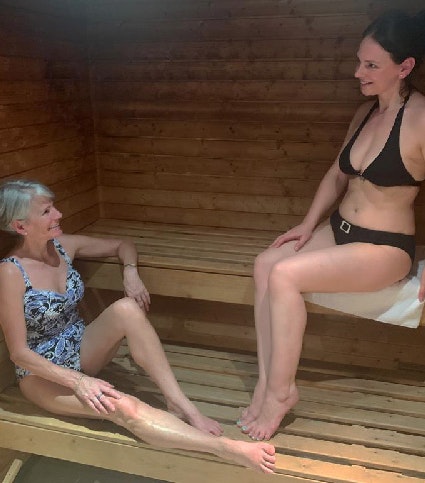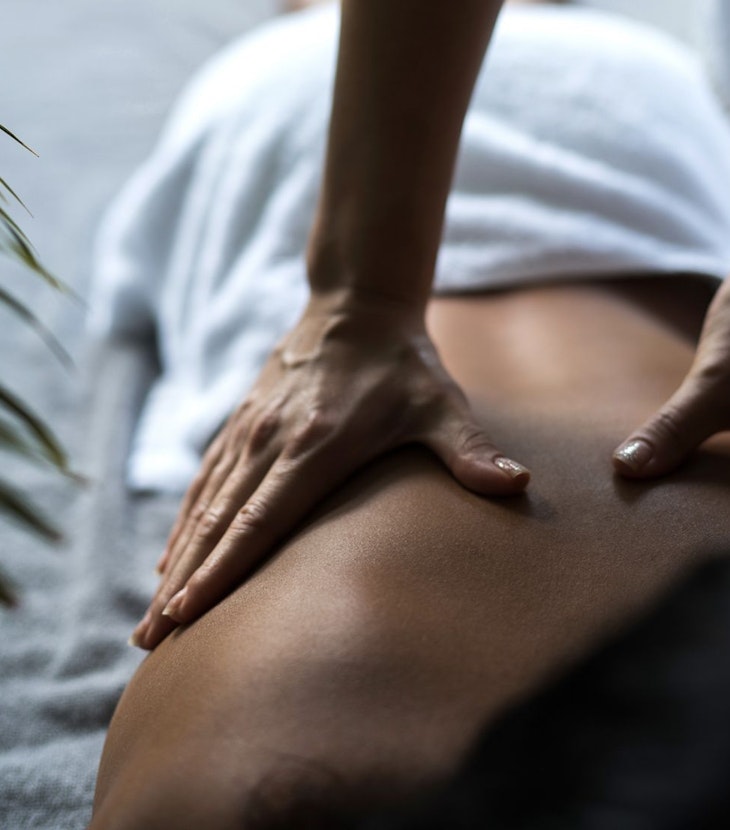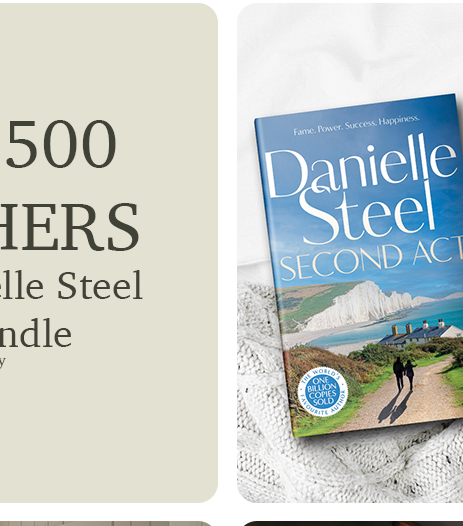
Beauty Cupboard Secrets: Are We Hanging On To Products That Are Past Their Best?
Many people are passionate about beauty, from trialling and testing the newest products on the shelves to trying multi-step methods to make their skin look the best that it can be - or simply taking time to do a polished makeup look that leaves them feeling great.
The beauty market is huge, with worldwide revenue from cosmetics surpassing $100 billion in 2022, and brands constantly innovating to bring the best and most exciting products to shops, and our beauty cupboards. Makeup and skincare trends also come and go, and with our skin being so unique and personal to us, it’s only natural that we accumulate skincare and makeup products over time, as we fall in and out of love with new items.
Many cosmetics enthusiasts will rotate items in and out of their makeup routines depending on the season and even save some products for special occasions only, however this could be having a detrimental impact on our skin, as each beauty product has its own specific expiry date.
To find out how beauty lovers are managing their makeup collections, we’ve taken a dive into consumer data to reveal the number of items in their collection, how many products may have seen better days, and which treatments people are attempting to DIY at home. We’ve also spoken to the skin care experts at our spas to reveal the impact that out-of-date products can have on our skin, and why there are some treatments that really are best left to the professionals.
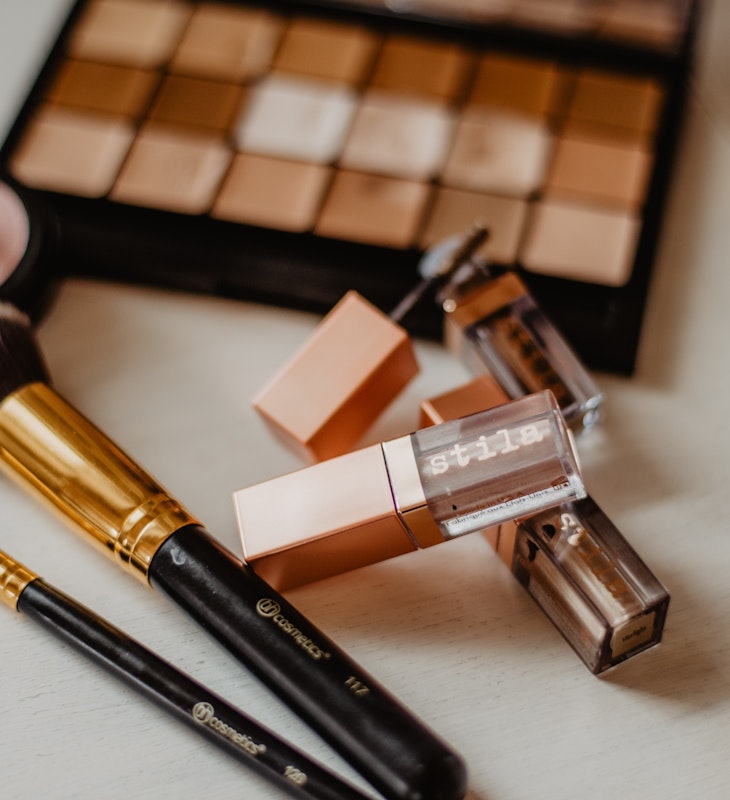
How much of our makeup collections are we really using?
People can approach makeup and skincare in completely different ways - some may have complex multi-step routines, with a lipstick for every occasion, while others may prefer a more minimal and pared-back approach. But that’s the beauty of makeup and skincare - it’s something that everyone can use, in whatever way feels best for them.
However, we wanted to find out just how many items we have in our collections on average, and how often we’re really using them.
On average, beauty lovers in the UK were found to own an average of 84 beauty and skincare related items, across 30 different categories - including lipstick and foundation, as well as chemical exfoliators, cleansers and makeup brushes. Of all items in our collections, makeup brushes are the thing that we’re likely to own the most of, with the average beauty lover owning six brushes to cover all their makeup needs. Lipsticks, perfumes and eyeshadow palettes follow as the next most popular items, with five of each usually found in beauty collections.
We seem to own multiples of most beauty products, while we’re more picky with our skincare, tending to own just one or two of each product type such as niacinamides, retinols and chemical exfoliators.
| Rank | Item | Number of each item owned |
|---|---|---|
| 1 | Make up brushes | 6 |
| 2 | Lipsticks | 5 |
| 3 | Perfumes | 5 |
| 4 | Eyeshadow/eyeshadow palette | 5 |
| 5 | Moisturiser | 4 |
| 6 | Lip gloss | 4 |
| 7 | Hand cream | 3 |
| 8 | Make up sponges | 3 |
| 9 | Face masks | 3 |
| 10 | Mascara | 3 |
But just because we own many products, doesn’t mean that we’re using them all on a regular, or even semi-regular basis. When asked how many of each item they use per week, beauty lovers revealed that they use on average 58 different items per week on their faces - which is the equivalent of just over two-thirds of their collections (69%). Although this may seem like a good use of products, this does mean that almost a third (31%) of products owned are going un-used on a weekly basis.
Looking at the most under-used products in beauty collections, lipsticks come out on top - beauty fans may own more lipsticks than any other product, but they definitely don’t make best use of their full collections on a weekly basis, only picking up around a third (37%) of their lipsticks to use each week. Eyeshadows follow in second, with 40% used per week, followed by makeup brushes, with only 42% of those owned being used on a regular basis.
| Rank | Item | % of items in collection used each week |
|---|---|---|
| 1 | Lipstick | 37% |
| 2 | Eyeshadow/eyeshadow palette | 40% |
| 3 | Makeup brushes | 42% |
| 4 | Perfumes | 46% |
| 5 | Lip gloss | 50% |
| 6 | Moisturiser | 56% |
| 7 | Face masks | 58% |
| 8 | Hand cream | 60% |
| 9 | Eyeliner | 62% |
| 10 | SPF/sunscreen | 63% |
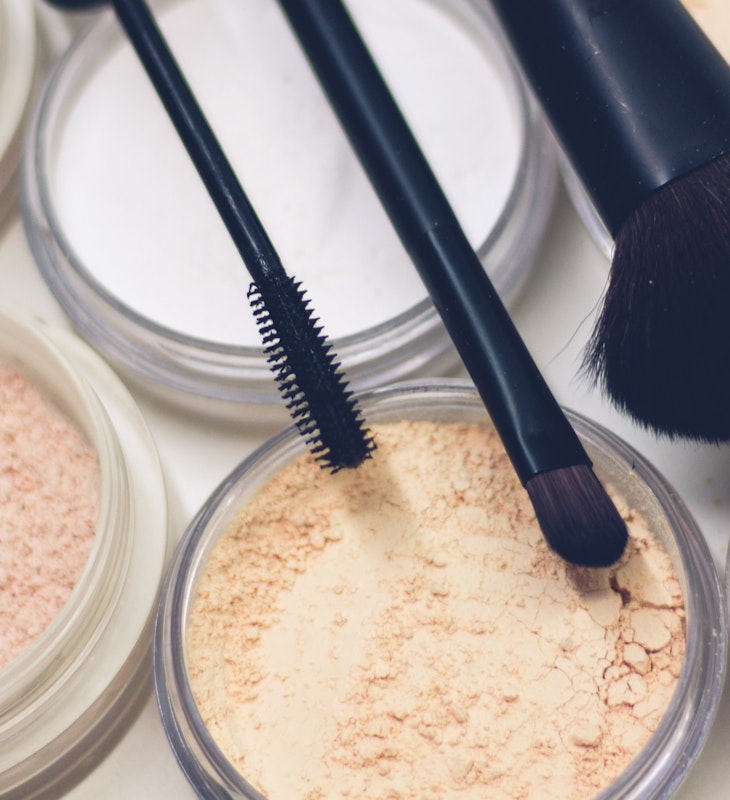
Which products are we using well beyond their best?
Though it may be news to some, makeup products all have their own equivalent of an ‘expiry’ date, called the ‘period after opening’ date, at which point it’s recommended that they’re no longer used. If you have a nail polish or foundation that you’ve left unused for months and then returned to, you may have noticed a difference in the consistency of the product, or how it applies - which will be as a result of the chemicals and ingredients losing their effectiveness over time.
In the case of skincare, some active ingredients may lose all their potency after a certain period of time, meaning that any expired products that you’re still using may not actually be having any effect on your skin at all.
Solid products in your collection are always likely to last longer than liquid products, with eyeshadows and lipsticks often carrying period after opening dates of up to three years once you’ve broken the seal. However, eye creams, vitamin C serums, and micellar waters all carry shorter dates, with it recommended that these products are used within an average of around six months once opened - though retinols beat them all, with brands recommending that they’re used up within three months of being opened.
| Rank | Item | % who use for longer than the expiry | Risks of using expired product |
|---|---|---|---|
| 1 | Mascara | 43% | Can harbour bacteria, cause eye infections, mascara more likely to flake off lashes |
| 2 | Make up sponges | 32% | Can harbour bacteria, cause breakouts and clogged pores, have poor makeup application |
| 3 | Eye creams | 32% | Product becomes ineffective, leaves eyes more susceptible to irritation and dryness |
| 4 | Retinol | 32% | Product becomes ineffective, risk of developing bacterial infections, irritation, rashes, and breakouts |
| 5 | Micellar water | 26% | Risk of developing bacterial infections, and can also lead to skin irritation, breakouts and other adverse reactions |
| 6 | Vitamin C serum or cream | 26% | Product becomes ineffective, skin more prone to redness, irritation and breakouts |
| 7 | Lipstick | 20% | Increased risk of developing bacterial infection, more likely to suffer with irritation and redness |
| 8 | Hand cream | 20% | Product becomes ineffective, leaves hands more susceptible to irritation and dryness |
| 9 | Lip gloss | 19% | Increased risk of developing bacterial infection, more likely to suffer with irritation and redness |
| 10 | SPF/sunscreen | 17% | Leave you vulnerable to sun burn, sun poisoning and other types of sun damage. Can also cause irritation and breakouts |
When it comes to using the products that are beyond their best, it’s out of date mascara that we’re using the most, with more than 2 in 5 (43%) of us using the product for longer than six months, which is the recommended period for them to be used once opened. Though using a mascara for months on end may seem harmless, it can be quite the opposite. With the mascara wands used close to our eyes and replaced into their tubes after each use, they can begin to harbour bacteria which could lead to eye infections. So, next time you pick up your mascara it might be worth working out how long it’s been since you opened it.
Similarly, almost a third (32%) of beauty lovers are using makeup sponges for much longer than they should be. Though we may wash our handy makeup tools on a regular basis, they’re another culprit for harbouring bacteria, so should be replaced a couple of times per year.
Eye cream (32%), retinol (32%) and micellar water (26%) complete the top five items that we’re using for longer than we should be. However, SPF completes the top ten, with 17% of us using facial SPFs more than 12 months after opening them. With the sun so damaging to our skin, and SPF a skincare essential all year round (not just in the summer!), it’s even more important to take note of use by dates here, to ensure that we’re properly protecting our skin.
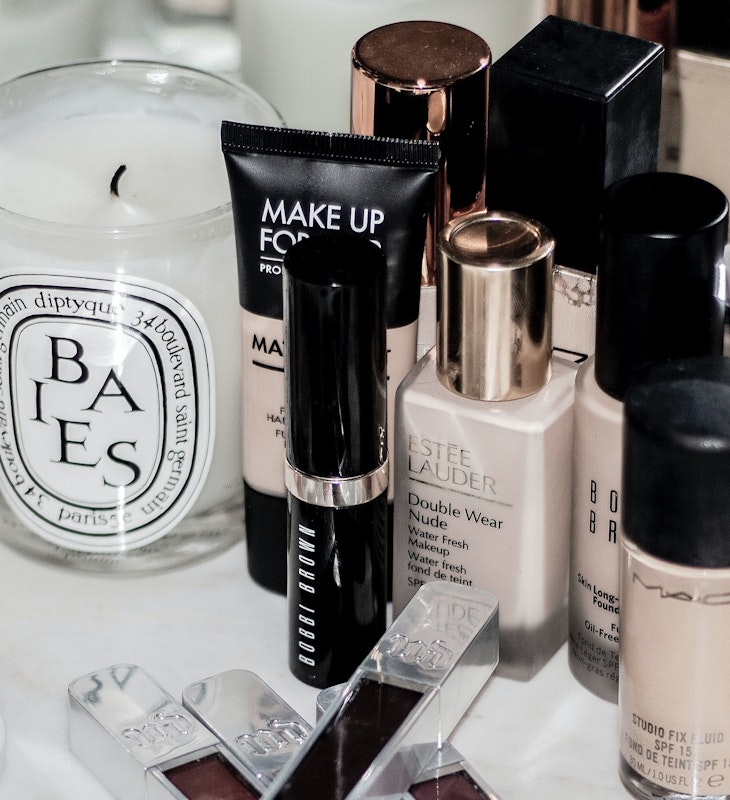
Here’s where you should be storing your makeup. Spoiler: it’s not in the bathroom.
With many makeup products comes a need for a level of organisation. It’s no good having multiples of each item, if they aren’t accessible and easy to find when you want them. Makeup storage has long been a topic of discussion with beauty influencers showing their organisational skills on YouTube, and Pinterest full of hacks for creating sophisticated solutions to showcasing and storing products.
However, some products fare better when stored in certain environments, which will help to ensure that they’re performing at their best and not degrading more quickly than they should. Though it may seem like a sensible place for storing makeup, the bathroom is actually one of the worst places for your products.
Temperature fluctuations and high levels of moisture can cause ingredients to break down quicker, or for powdered products to go clumpy - this is particularly true for products such as eyeshadows and blushers, which more than 1 in 10 (11%) people admitted to storing in their bathrooms. Keeping mascara in your bathroom, as 13% of people do, is also a bad idea, with the increased moisture levels and higher temperatures creating the perfect breeding ground for bacteria to multiply.
Though the bathroom may seem like a sensible place to store skincare, the same is true for these products. However, cleansers (26%), moisturisers (25%) and hand creams (20%) are among the top items that beauty lovers were most likely to keep in the bathroom.
| Rank | Item | % who store in the bathroom |
|---|---|---|
| 1 | Facial cleanser | 26% |
| 2 | Moisturiser | 25% |
| 3 | Hand cream | 20% |
| 4 | Face masks | 19% |
| 5 | Micellar water | 19% |
| 6 | Exfoliator | 18% |
| 7 | SPF/sunscreen | 18% |
| 8 | Eye creams | 16% |
| 9 | Mascara | 13% |
| 10 | Perfumes | 13% |
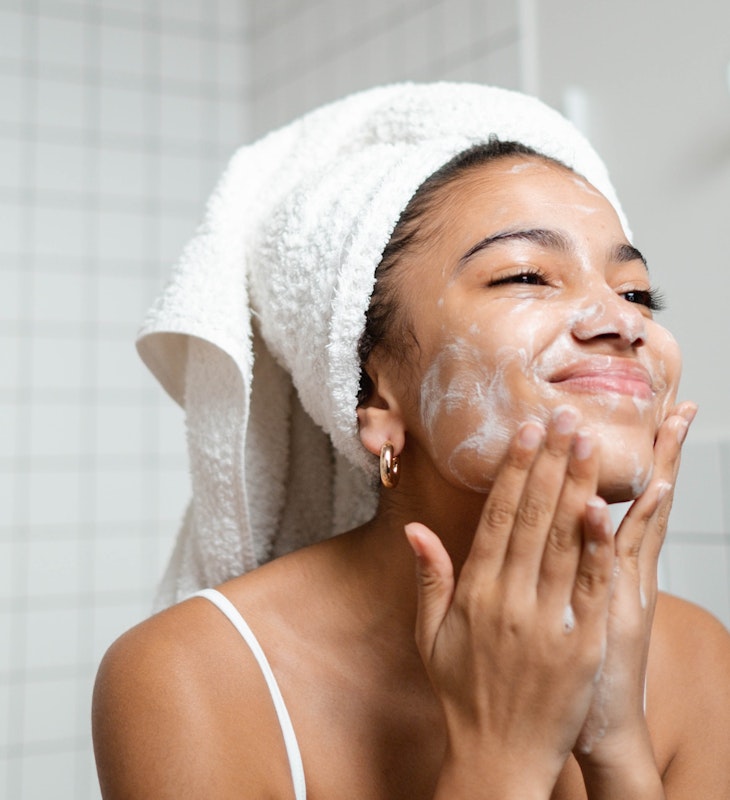
The treatments we’re tackling at home (but probably shouldn’t be…)
As well as the products that we use, treatments can also be extremely beneficial for both our skin and wider wellbeing. Beauty therapists such as those found in local salons and spas are always the best port of call for those looking for a specific treatment, but for many, cheaper DIY kits are all too tempting.
Looking at the treatments that we’re performing at home the most, blackhead extractions come out on top with 16% of us attempting this. Although it might seem super satisfying, there are risks to doing it yourself, the experts at SpaSeekers say: “Though it can be tempting to pick and pop any blackheads you spot in the mirror, it’s very easy to force the debris deeper into the pore, which will in turn make your skin even more inflamed and swollen and significantly increase the risk of scarring. Blackhead extraction tools also carry their own risks – namely the risk of infection if they aren’t used and sterilised correctly”.
Teeth whitening follows in second place (15%) and gel manicures in third (14%). Though DIY treatments such as teeth whitening and gel manicures can seem very straightforward and harmless to carry out at home with the help of kits, they can carry more risks than we may realise.
Gel nails have seen a significant increase in popularity since the pandemic, with at-home kits easily available to purchase online and often promoted by some of our favourite influencers. However, spa manager Megan Boyd from Eden Spa, Down Hall says that although the treatment may seem simple to perform, it could be problematic to do ourselves: “The ingredients used in DIY products purchased online and, in some shops, are not always of an approved standard – for example, recent reports have shown that some acrylic powders sold online actually contained dangerous substances and plastic. Trained therapists will always use approved products with high-quality ingredients, so it’s worth sticking with your nail tech to get the best results”.
The spa experts from Brooklands Hotel and Spa echo this, explaining that “there have been reports of an increase in allergic reactions to gel manicures, with this occurring mainly when people attempt gel manicures at home. We have a thorough pre-treatment questionnaire to highlight any allergies a guest may have, for us to then adapt and advise on the most appropriate treatment accordingly, significantly reducing your risk of any ill effects”.
Personal waxes (such as bikini, underarm, leg) and facial waxes (such as eyebrows, upper lip) are two other treatments that we’re attempting from home, rather than visiting the salon, with the waxes ranking as our 4 th and 6 th most DIY-ed treatments respectively. The nature of wax treatments requires wax to be heated up and applied to the skin, before being removed, which spa therapist Joanna from Mana Spa, Coventry warns can lead to “possible burning of the skin, if the wax isn’t of the correct temperature, and also bruising of the skin if the wax strip isn’t removed correctly” - neither of which sound like particularly comfortable outcomes from what should be a relatively painless and efficient treatment!
| Rank | Item | % who complete treatments at home |
|---|---|---|
| 1 | Blackhead extractions | 16% |
| 2 | Teeth whitening | 15% |
| 3 | Gel nails | 14% |
| 4 | Personal wax (e.g. bikini, underarm, leg) | 13% |
| 5 | Brow tinting | 12% |
| 6 | Facial waxing (e.g. eyebrows, upper lip) | 11% |
| 7 | Acrylic nails | 9% |
| 8 | Lash tinting/LVL | 6% |
| 9 | Laser hair removal | 5% |
| 10 | Lash extensions | 5% |
If you’re tempted to try one of these treatments at home, why not book in for a spa day to treat yourself in the hands of a professional instead?
Methodology
We partnered with Censuswide to survey 763 UK respondents, aged 16+ who use beauty products. Each respondent was asked a series of questions, covering the items they have in their makeup collections, how many items they use per week, where they store these items and which beauty treatments they complete at home.
Survey conducted in April 2023.


